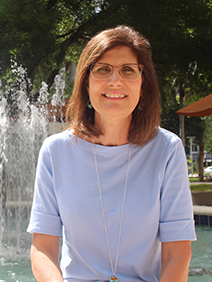Autism Rates are Rising? Why?

The prevalence of autism has been inching up steadily since the Centers for Disease Control and Prevention began keeping count, and the latest report is no exception. Published every two years by the CDC’s Autism and Developmental Disabilities Monitoring Network, the study shows the rates of autism spectrum disorder (ASD) jumped 10% between 2014 and 2016.
This means that 1 in 54 8-year-olds was identified along the spectrum in 2016, up from 1 in 59 just two years earlier. This is the highest estimated diagnosis rate since the CDC began tracking ASD with special monitoring sites in 2000.
In fact, the increase is even more startling when compared over the past two decades, with autism rates spiking more than 150%. In 2000, one in 150 children was diagnosed with the developmental disorder.
The report does not give a reason for this decades-long climb; but Jeffrey P. Brosco., M.D., Ph.D., an expert in Developmental-Behavioral Pediatrics at the University of Miami Health System, says there could be several explanations.
What’s more, he believes these alarming numbers may actually signal an opportunity.
“We don’t fully know the answer [for the increase],” says Dr. Brosco.
“But what we do know is that more children are being identified, which means we can intervene and support them and their families.”
Dr. Brosco
Autism is a developmental disorder that ranges from mild to severe. It’s characterized by varying levels of difficulty with social interaction and communication.
Many, though not all, children with autism engage in repetitive behavior, such as unusual play, hand-flopping, or rocking.
These signs tend to develop gradually, starting at around 18 months, but some children do regress in their skills even when they hit their milestones. Parents usually notice the telltale signs during the first three years of their child’s life.
Environmental factors are probably not to blame for the increase in ASD rates, as some people mistakenly fear, Dr. Brosco says. In particular, research has shown no connection to vaccines. Instead, the rise in rates may be due, in part, to the increased awareness of parents and clinicians. In his practice, he sees more children diagnosed with mild autism — what back in the 1980s and ’90s might not have been diagnosed at all.
The increase is also driven by the rising diagnoses rates in minority children, with African-Americans and Hispanics narrowing the “diagnostic gap” with their white counterparts. This is evident in the most recent two-year interval between studies.
The latest report was the first time researchers found no “statistically significant” difference in autism rates between black and white children.
Progress in closing that gap has been slow but steady. Just two years earlier, whites were diagnosed 10% more often than African-Americans and 20% more often than Hispanics. Even then, that was a considerable drop from 2012, when white kids were diagnosed 50% more often than Hispanic kids and 20% more than African-American children.
Unfortunately, this last report showed that Hispanic children continued to be diagnosed at lower rates.
“We think this gap is related to access to care,” Dr. Brosco explains. “It’s not just in autism. We see it in other conditions and diseases as well.”
Both Hispanic and Black kids are evaluated and diagnosed at older ages than white children, a troubling disparity because a timely diagnosis translates into improved outcomes. The median age of autism diagnosis is after 4 years of age, though the condition can be reliably identified by age 2.
“The research is clear,” Dr. Brosco says. “If there is early intervention, the outcome is so much better. “
He encourages parents to track their child’s development carefully.
“Look for speech delays or difficulties in communication,” he adds.
By 18 months or so, a child should be able to point to an object when trying to communicate. The child should also be able to respond in some manner when an adult calls the child’s name or points to an object. If there are any concerns about a child reaching developmental milestones, it’s essential to consult with the family pediatrician and have the child screened quickly.
“Brain plasticity, the ability of the brain to change and adapt, is strongest in younger children,” Dr. Brosco explains. “That’s one of the reasons why it’s easier to learn another language at a young age.”
The CDC provides a handy guide of ASD’s sign and symptoms.

Ana Veciana-Suarez, Guest Columnist
Ana is a regular contributor to the University of Miami Health System. She is a renowned journalist and author who has worked at The Miami Herald, The Miami News, and The Palm Beach Post. Visit her website at anavecianasuarez.com or follow @AnaVeciana on Twitter.
For more information about your child’s health or to make an appointment, click here.
Update: Medically reviewed and approved by Dr. Brosco in February 2023.
Originally published on: April 21, 2021
Tags: autism, autism in Miami, autism spectrum disorder, Dr. Jeffrey Brosco, health disparity, Mailman Center for Child Development
